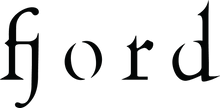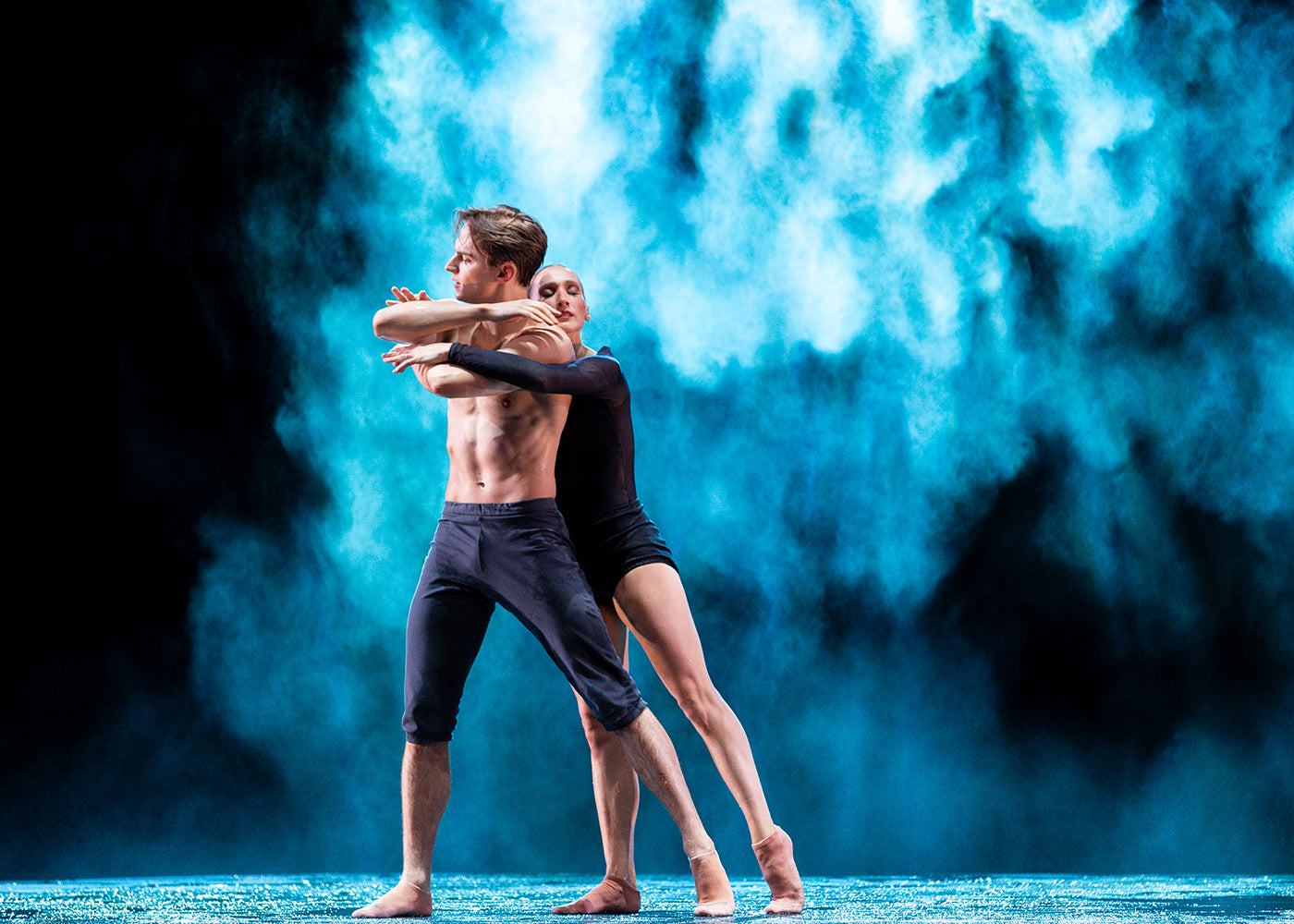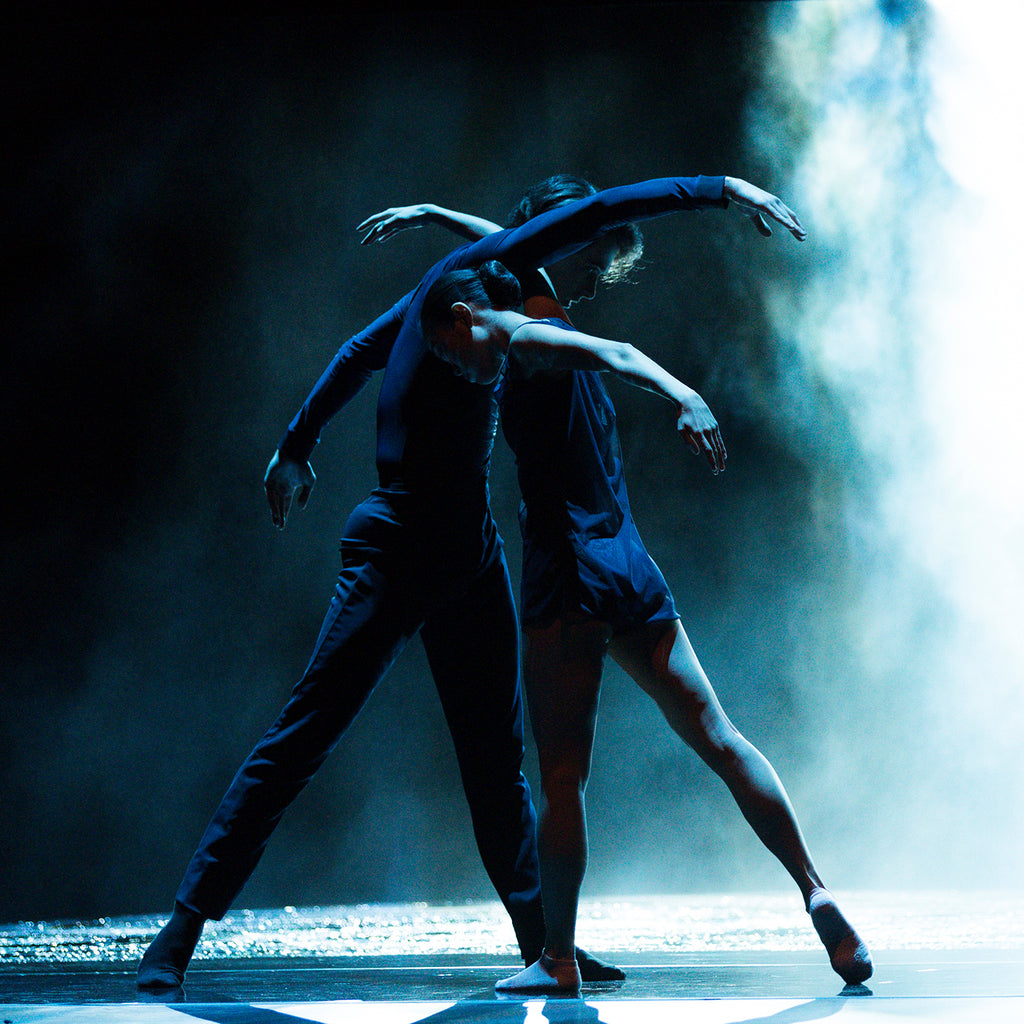First off, in order to enact the monumental quality of a non-temporal, two-dimensional work of art (those Chagall stained glass windows) does a dance need to be, well, so damn long? Which leads to a question that tells my age. This child of the ‘70s and ‘80s grew up on an earlier monumental work set to assorted tracks of Philip Glass music: Twyla Tharp’s “In the Upper Room.” I finished “One Thousands Pieces” wondering how Tharp made her work so continually exhilarating, so unflagging in its escalation of formal excitements—and feeling less thrilled by Cerrudo’s Glass opus in comparison.
To be fair, in responding to the two-dimensional effect of Chagall’s art, Cerrudo seems to want to build a less escalating form than Tharp’s. “One Thousand Pieces” feels like a work to get lost in rather than a roller coaster to ride, a dance to wander through the way you might stand in one gallery, and then another.
My favorite “rooms” were any of the ensemble sections featuring Christopher D’Ariano, moving with liquid dignity. Angelica Generosa had a darkly memorable duet with Jonathan Bautista, jumping off his back as though dropping from the second story of a building, moving her mouth in slow motion anger. I could have done without the section of Miles Pertl suspended on invisible wires, telling a story of two lovers struggling to profess their infinite affection (did Pertl represent Chagall himself)? Nonetheless, Pertl’s vocal delivery could have passed muster with the finest theater companies.











comments